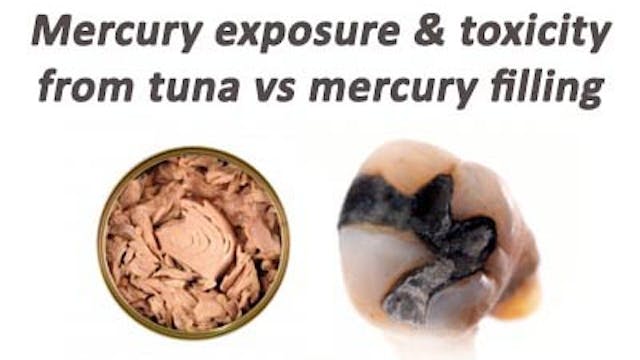Mercury levels in Americans rose from 2% in 1999 to 30% in 2006
Bonus Material Only
•
3m 34s
Assessment of chronic mercury exposure within the U.S. population, National Health and Nutrition Examination Survey, 1999–2006
Dan Laks, Biometals, 2009
Dan Laks, lead author of the study "Assessment of chronic mercury exposure within the U.S. population, National Health and Nutrition Examination Survey, 1999--2006)" analyzed data from the CDC's National Health Nutrition Examination Survey (NHANES) and found that in the 1999-2000 NHANES survey, mercury was detected in the blood of 2 percent of women aged 18 to 49, that level rose to 30 percent of women by 2005-2006.
Furthermore, multivariate logistic regression
revealed significant associations of both I-Hg
detection and mean concentration with biomarkers
for the main targets of mercury deposition and effect:
the liver, immune system, and pituitary. This study
provides compelling evidence that I-Hg deposition
within the human body is a cumulative process,
increasing with age and in the population over time.
Up Next in Bonus Material Only
-
Correlation Vs Causation
David Geier: Correlation Vs Causation
-
Comparing exposure & risk of mercury ...
Mark Richardson PhD compares exposure & risk to mercury in tuna fish vs mercury dental fillings.
Inorganic mercury (as from dental mercury fillings) has an EPA safety level that is 10 times lower than that of methyl-mercury as from fish, this implies that our government agencies view inorgani...
-
Oxidative Stress & Retention Toxicity
Boyd Haley PhD discusses Oxidative Stress & Retention Toxicity



1 Comment